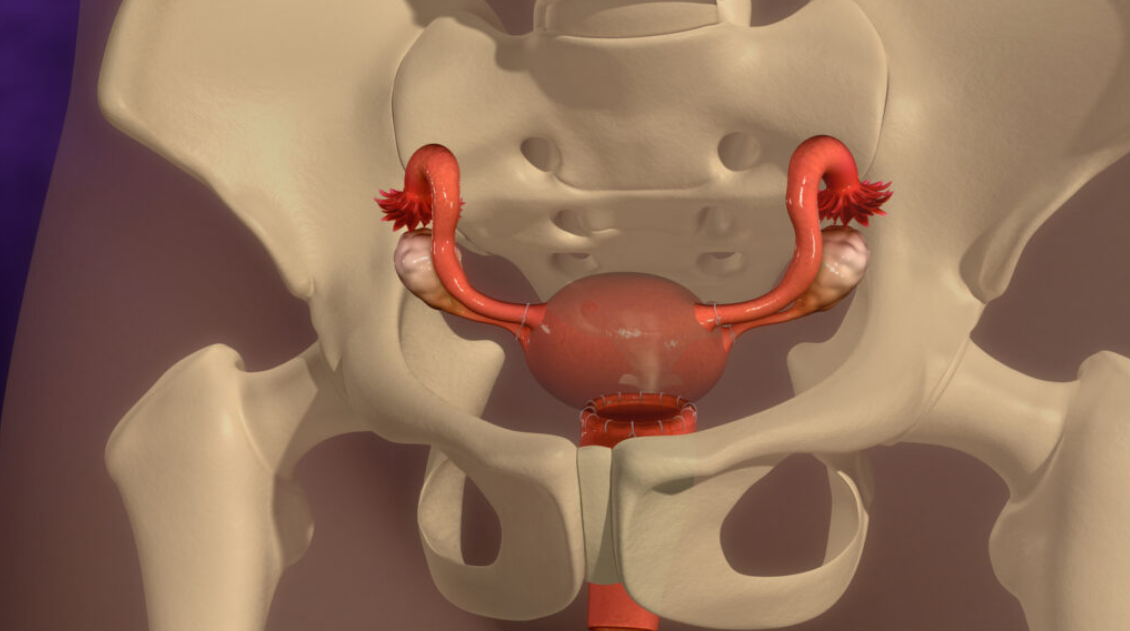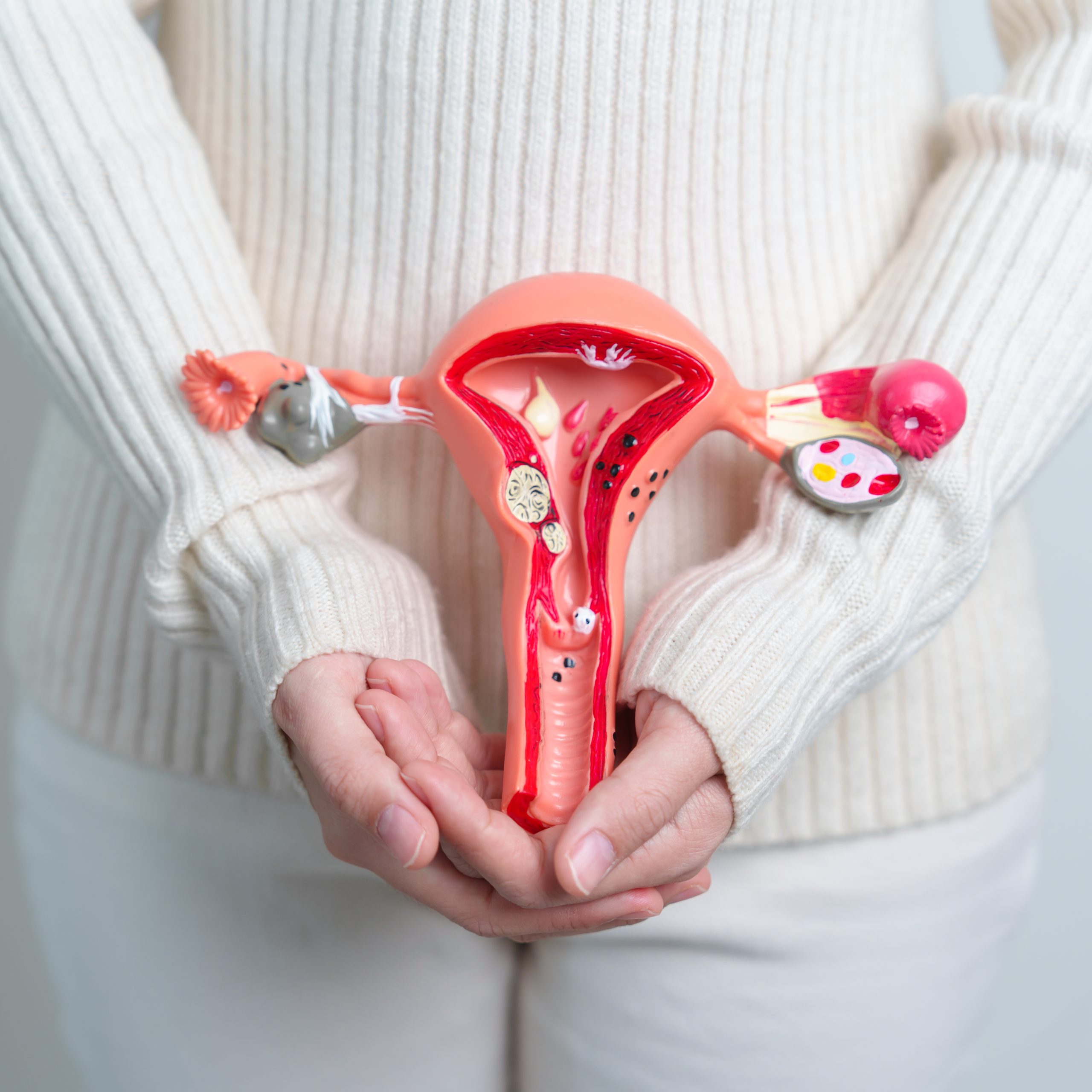Our Preparing for series allows a patient to prepare themselves for a procedure properly. We answer questions about how long the procedure will last, what’s involved, what to expect, and even advice on packing your bag. While your surgeon preps, we’ll make sure you’re ready.
What is an Abdominal Hysterectomy?
A hysterectomy is a surgery to remove the uterus. Gynecologists perform hysterectomies for a variety of gynecologic conditions such as uterine fibroids, heavy periods, endometriosis, chronic pelvic pain, uterine prolapse, and gynecologic cancer.
During a hysterectomy, a surgeon removes the uterus. Gynecologists often recommend removing the fallopian tubes (bilateral salpingectomy) to reduce the risk of ovarian cancer. Some women will also need the removal of the ovaries (oophorectomy). Removal of the ovaries triggers hormonal changes. After a hysterectomy, a woman can longer get pregnant.
Gynecologists perform hysterectomies through a variety of techniques. The patient’s uterus size, body type, and prior surgical history help determine the surgical approach. Techniques include:
- Vaginal hysterectomy
- Abdominal hysterectomy
- Laparoscopic hysterectomy
- Laparoscopic-assisted vaginal hysterectomy
- Robotic hysterectomy
What are the advantages of abdominal hysterectomy?
In an abdominal hysterectomy, the uterus is removed through an incision in the lower abdomen. The abdominal incision gives a large clear view of the pelvis and allows us to work through adhesions from prior surgeries or endometriosis most carefully. It can be performed even if the uterus is huge.
However, abdominal hysterectomy is associated with a greater risk of complications than a vaginal hysterectomy or laparoscopic hysterectomy.
Wound infections, bleeding, blood clots, and nerve and tissue damage are more common. Abdominal hysterectomy also requires a more extended hospital stay and a longer recovery time.
Some patients may not be candidates for minimally invasive approaches because of uterine size or prior surgical history. Your doctor will determine which surgical approach is most suitable for you.
Is a hysterectomy safe?
Hysterectomy is a very safe surgical procedure, and complications are rare. However, as with any surgery, problems can occur, such as:
- Fever and infection
- Heavy bleeding during or after surgery
- Injury to the urinary tract or nearby organs
- Blood clots in the leg that can travel to the lungs
- Breathing or heart problems related to anesthesia
- Death
Some problems are discovered immediately, and some may not show until days, weeks, or even years after surgery. These problems include the formation of a blood clot, infection, or bowel blockage. Complications are generally more common after an abdominal hysterectomy and in women with certain underlying medical conditions.

Beautiful woman taking a selfie photo in hospital ward portrait. Social media addict concept
How long will I be in the hospital?
Most women will need to stay 1–2 nights after an abdominal hysterectomy. Various factors, such as the patient’s underlying health status, surgical complexity, and physician preference, help determine the surgical plan.
Can my family visit me?
A trusted family member should drive you to and from the hospital. Families are welcome to stay with you before and after surgery. Hospital visitor policies for overnight stays vary with the ongoing COVID-19 pandemic.
Does my procedure require an anesthetic?
An abdominal hysterectomy requires general anesthesia, meaning patients will temporarily be put to sleep. The surgeon may also inject a local anesthetic into the incisions to decrease postoperative pain.
Why do I need a preoperative clinic visit?
Most surgeries will involve a preoperative visit with your surgeon to review the procedure’s risks and benefits and answer your questions regarding the upcoming surgery. Because hysterectomies will eliminate the possibility of child-bearing, your doctor will confirm that you do not want children in the future.
It is essential to provide your doctor with an updated list of all medications, vitamins, and dietary supplements before surgery. The surgical team will review your medications. Together we can plan when to take the last dose when to resume medications. Medication management is particularly important for patients taking aspirin, blood pressure medicines, and diabetes medicines. Your doctor should review all medication and food allergies. We remind patients to avoid alcohol 24 hours before the surgery.
If any blood work or preoperative testing is required, it will be scheduled and confirmed. If appropriate, share any lab work, radiologic procedures, or other medical tests done by other healthcare providers with your surgeon before your surgery. Some patients may need to supply a surgical clearance letter from their primary care physician.
Finally, the doctor will give instructions regarding your diet before the surgery.
Try to avoid wearing jewelry, make-up, nail polish/acrylic nails on the day of surgery. If you wear contacts, glasses or dentures, please bring a case.
You should also confirm the date, time, and location of the surgery.
What happens after I check-in at the hospital?
After arrival at the hospital, the staff will guide you to the pre-operative holding area to change into a surgical gown and store your belongings. You will meet the nursing team who will provide care during your surgery. They will review your medical history. The surgical consent form is reviewed, signed, or updated with any changes. An IV will be placed at this time. You may be given special stockings to help prevent a blood clot.
The anesthesia team will also interview you and answer questions. Typically your surgeon will review any last-minute questions.
What happens in the operating room?
After the preoperative evaluation, the team will guide you to the operating room. You will move from the mobile bed to the operating table. Monitors will be attached to various parts of your body to measure your pulse, oxygen level, and blood pressure. Then the anesthesiologist will give medication through your IV to help you go to sleep.
The OR nursing team will cover your body with sterile drapes and apply an antibacterial fluid to your abdomen and vagina. After you are asleep, a tube called a catheter will be placed in your bladder to drain urine. The team then performs a “surgical time-out.” A surgical safety check-list is read aloud, requiring all surgical team members to be present and attentive.
The gynecologist begins by making an incision in the lower abdomen. It is typically horizontal, but sometimes a vertical incision is needed if there is a large uterus or large mass.
Once the uterus and ovaries are visualized, we place a metal retractor to maintain a clear view of the pelvis. This step helps us safely operate and avoid injury to surrounding tissue such as the bladder, rectum, intestines, and ureter.
The surgeon works carefully from the outer edges inward. First, we dissect the broad ligament, the thin layer of connective tissue covering the female organs. If the plan is to remove the ovaries, we start with this step. Otherwise, we begin by separating the tubes from the surrounding tissues until the uterus is reached.
The surgeon then separates the uterus from the surrounding connective tissue by moving downward toward the cervix. At this point, the surgeons detach the bladder from the uterus. After the bladder is safely out of the way, the surgeon will focus on the uterine arteries.
These two blood vessels are the main blood supply to the uterus and travel over the ureters, the tubes which connect the kidney to the bladder. Once the uterine arteries are controlled, the surgeon then safely gradually separates the uterus from the body. Depending on the anatomy, bleeding, or scar tissue, the surgeon may decide not to removal the cervix.
The uterus and tubes (and sometimes ovaries) are sent to the pathology lab for microscopic analysis. The surgeon examines all of the surgical sites for bleeding.
The surgeon then sews the edges of the vagina closed to form the vaginal cuff. If the cervix has not been removed, it is carefully inspected for bleeding.
Afterward, the abdomen and pelvis are washed in a warm saltwater (saline) solution. Then, the layers of the abdominal wall and skin are carefully closed.
Once the procedure is complete, the surgical team completes a post-procedure review. All instruments and equipment are counted and verified. When finished, the anesthesiologist will begin to wake up the patient and then transfer her to the recovery room.
What happens in the RECOVERY ROOM?
Once the operation is over, you will be moved into the recovery area. This area is equipped to monitor patients after surgery.
Many patients feel groggy, confused, and chilly when they wake up after an operation. You may have muscle aches or a sore throat shortly after surgery. These problems should not last long. You can ask for medicine to relieve them. You will remain in the recovery room until you are stable. Afterward, you will be moved to a hospital room for the rest of your stay.
As soon as possible, your nurses will have you move around as much as you can. You may be encouraged to get out of bed and walk around more quickly after your operation. Walking helps reduce the risk of blood clots. You may feel tired and weak at first. The sooner you resume activity, the sooner your body’s functions can get back to normal.
What preparations should I make for aftercare at home?
You should speak with your physician regarding the resumption of exercise and sexual activity. Your doctor will also review wound care instructions. Sexual activity is typically restricted for 6–8 weeks to allow the vagina to heal. Do not insert anything into your vagina — no sex, tampons, or douching — until cleared by your doctor.
Most women can return to basic activities in one to two weeks. Generally, we recommend patients stick to light activity only for the first 4–6 weeks. Light exercise helps your body heal and prevents some postoperative complications. Be sure to get plenty of rest, but you also need to move around as often as you can. Take short walks and gradually increase the distance you walk every day. Avoid strenuous exercise and heavy lifting.
You may resume a regular diet on the day of surgery. It may help prepare some meals and do your grocery store shopping and laundry before surgery.
You will be given instructions to help control postoperative pain during healing. Some pain is expected for the first few weeks after the surgery. You may also have light bleeding and vaginal discharge for a few weeks. Sanitary pads can be used after the surgery. Constipation is common after hysterectomies. Try a stool softener and fiber supplement. Some women have temporary problems with emptying the bladder after a hysterectomy. Some women have an emotional response to hysterectomy. You may feel depressed that you are no longer able to carry a pregnancy, or you may be relieved that your former symptoms are gone.
Your doctor will schedule a postoperative examination 4–6 weeks after the procedure.
After recovery, we recommend continuing your annual routine gynecologic exams. Depending on your age and reason for the hysterectomy, you may still need pelvic exams and pap tests.
DANGER SIGNALS
Call your doctor or report to the ER if you experience:
- Pain not controlled with prescribed medication
- Fever > 101
- Severe nausea and vomiting
- Calf or leg pain
- Shortness of breath
- Heavy vaginal bleeding
- Foul-smelling vaginal discharge
- Abdominal pain not controlled by pain medication
- Inability to pass gas or have a bowel movement
Article originally published on Medika Life.
Blog Author: Dr. Reshma Patel











